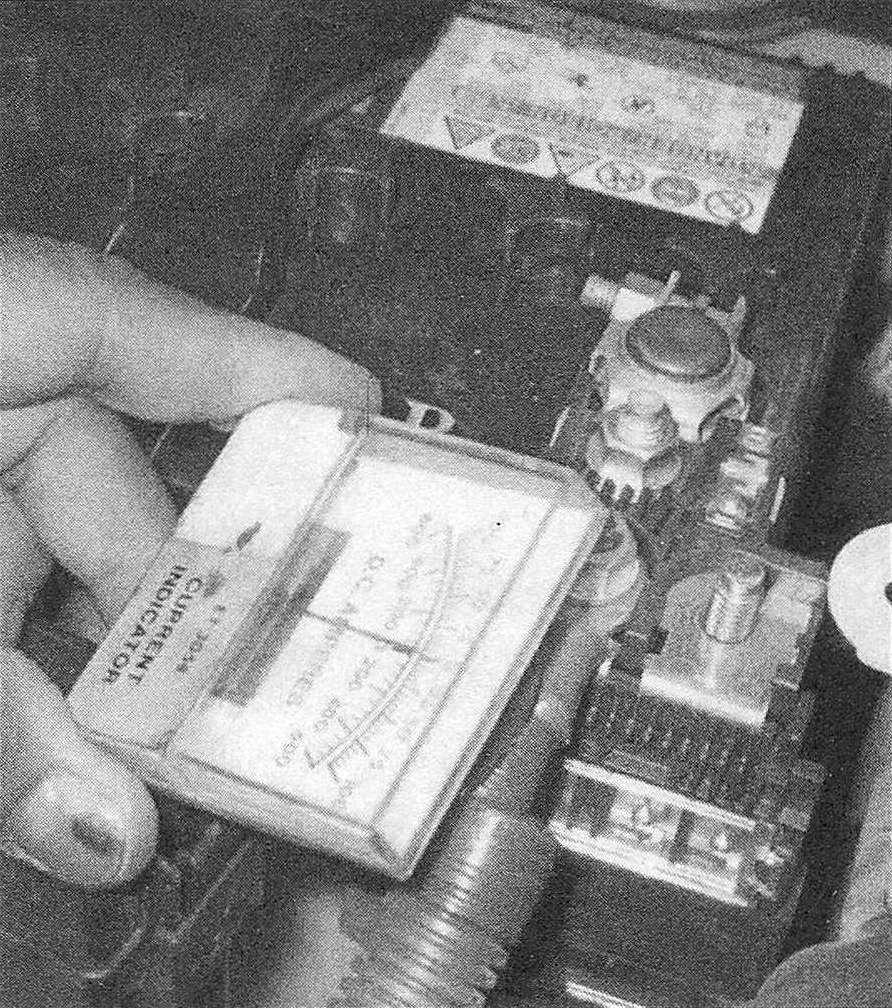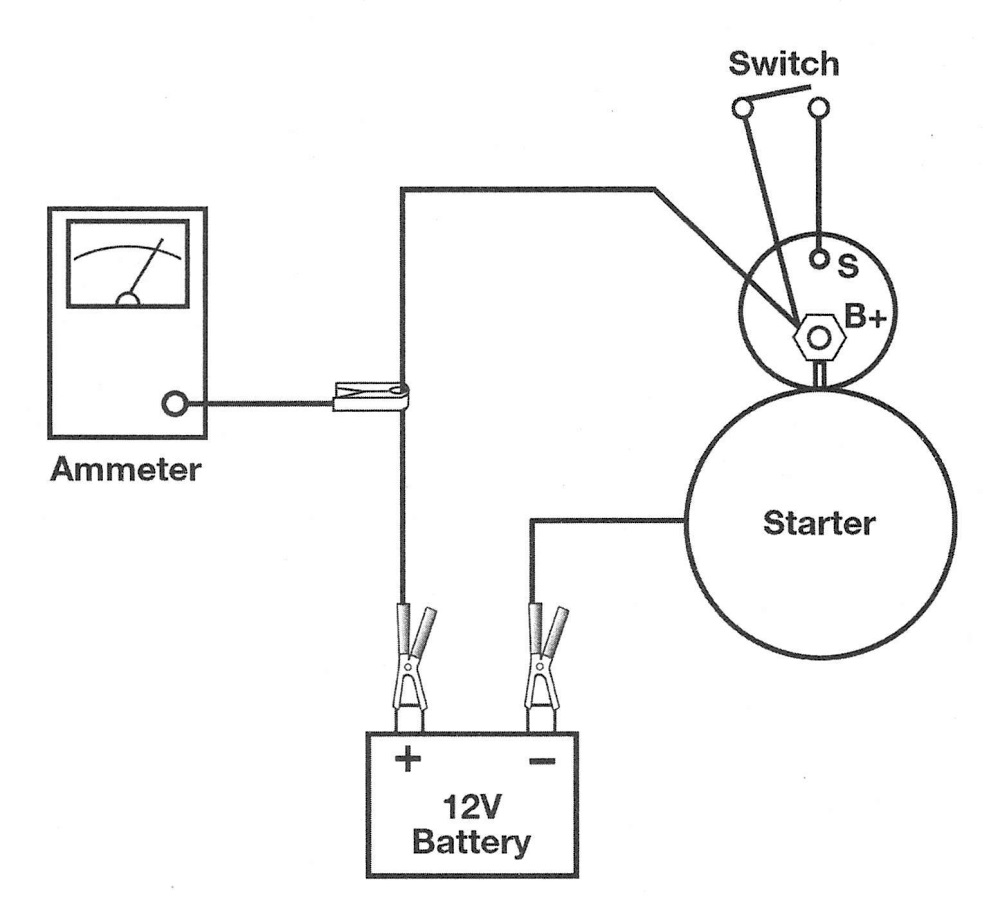Starter motor and circuit – check
1. If a malfunction occurs in the starting circuit, do not immediately assume that the starter is causing the problem. First, check the following items:
a) Make sure the battery cable clamps, where they connect to the battery, are clean and tight.
b) Check the condition of the battery cables (Battery cables – check and replacement). Replace any defective battery cables with new parts.
c) Test the condition of the battery (Battery – check and replacement). If it does not pass all the tests, replace it with a new battery.
d) Check the starter motor wiring and connections.
e) Check the starter motor mounting bolts for tightness.
0 Check the related fuses in the engine compartment fuse box (see Chassis electrical system). If they’re blown, determine the cause and repair the circuit.
g) Check the ignition switch circuit for correct operation (see Chassis electrical system).
h) Check the starter relay (see Chassis electrical system).
i) Check the operation of the clutch pedal position switch (see Clutch and driveline) or the Transmission , Range (TR) sensor (see Emissions and engine control systems). These systems must operate correctly to provide battery voltage to the starter solenoid.
2. If the starter does not activate when the ignition switch is turned to the start position, check for battery voltage to the starter solenoid. This will determine if the solenoid is receiving the correct voltage from the ignition switch. Connect a 12-volt test light or a voltmeter to the starter solenoid positive terminal. While an assistant turns the ignition switch to the start position, observe the test light or voltmeter. The test light should shine brightly or battery voltage should be indicated on the voltmeter. If voltage is not available to the starter solenoid, refer to the wiring diagrams and check the fuses and starter relay in series with the starting system. If voltage is available but there is no movement from the starter motor, remove the starter from the engine (Starter motor – removal and installation) and bench test the starter (see Step 4).
3. If the starter turns over slowly, check the starter cranking voltage and the current draw from the battery. This test must be performed with the starter assembly on the engine. Crank the engine over (for 10 seconds or less) and observe the battery voltage. It should not drop below 9.6 volts. Also, observe the current draw with an ammeter (see illustration). Typically a starter should not exceed 160 amps. If the starter motor amperage draw is excessive, have it tested by a dealer service department or other qualified repair shop. There are several conditions that may affect the starter cranking potential. The battery must be in good condition and the battery cold-cranking rating must not be under-rated for the particular application. Check the battery specifications carefully. The battery terminals and cables must be clean and not corroded. Also, in cases of extreme cold temperatures, make sure the battery and/or engine block is warmed before performing the tests.
12.3 Use an inductive ammeter to measure starter current draw
4. If the starter is receiving voltage but does not activate, remove and check the starter motor assembly on the bench. Most likely the solenoid is defective. In some rare cases, the engine may be seized so be sure to try and rotate the crankshaft pulley (see Chapter 3.7L V6 and 4.7L V8 engines ; Hemi engine ; Diesel engine ; 3.6L V6 engine ) before proceeding. With the starter assembly mounted in a vise on the bench, install one jumper cable from the positive terminal of a test battery to the B+ terminal on the starter. Install another jumper cable from the negative terminal of the battery to the body of the starter (see illustration). Install a starter switch and apply battery voltage to the solenoid S terminal (for 10 seconds or less) and observe the solenoid plunger, shift lever and overrunning clutch extend and rotate the pinion drive. If the pinion drive extends but does not rotate, the solenoid is operating but the starter motor is defective. If there is no movement but the solenoid clicks, the solenoid and/ or the starter motor is defective. If the solenoid plunger extends and rotates the pinion drive, the starter assembly is operating properly.
12.4 Starter motor bench-testing details

